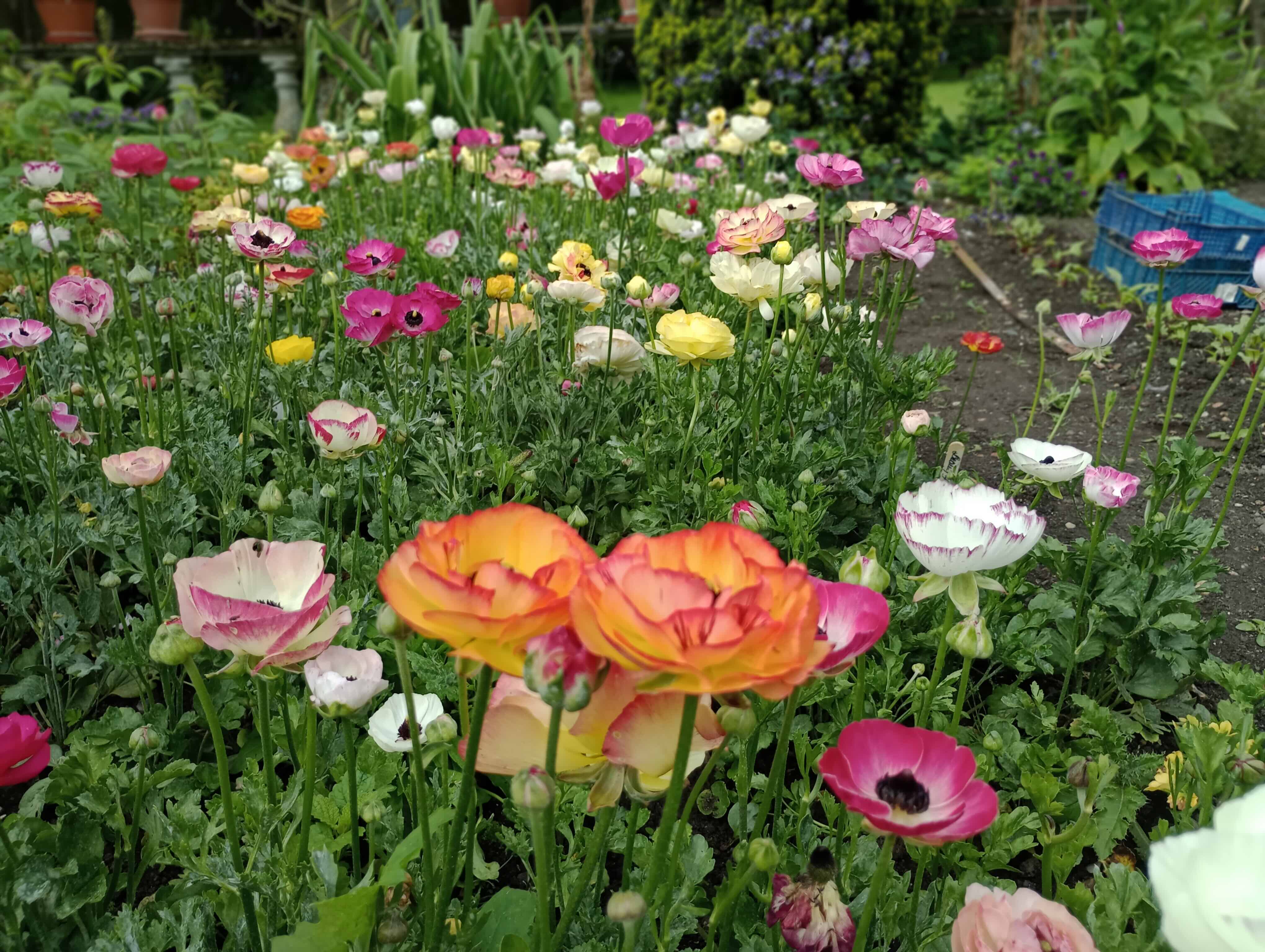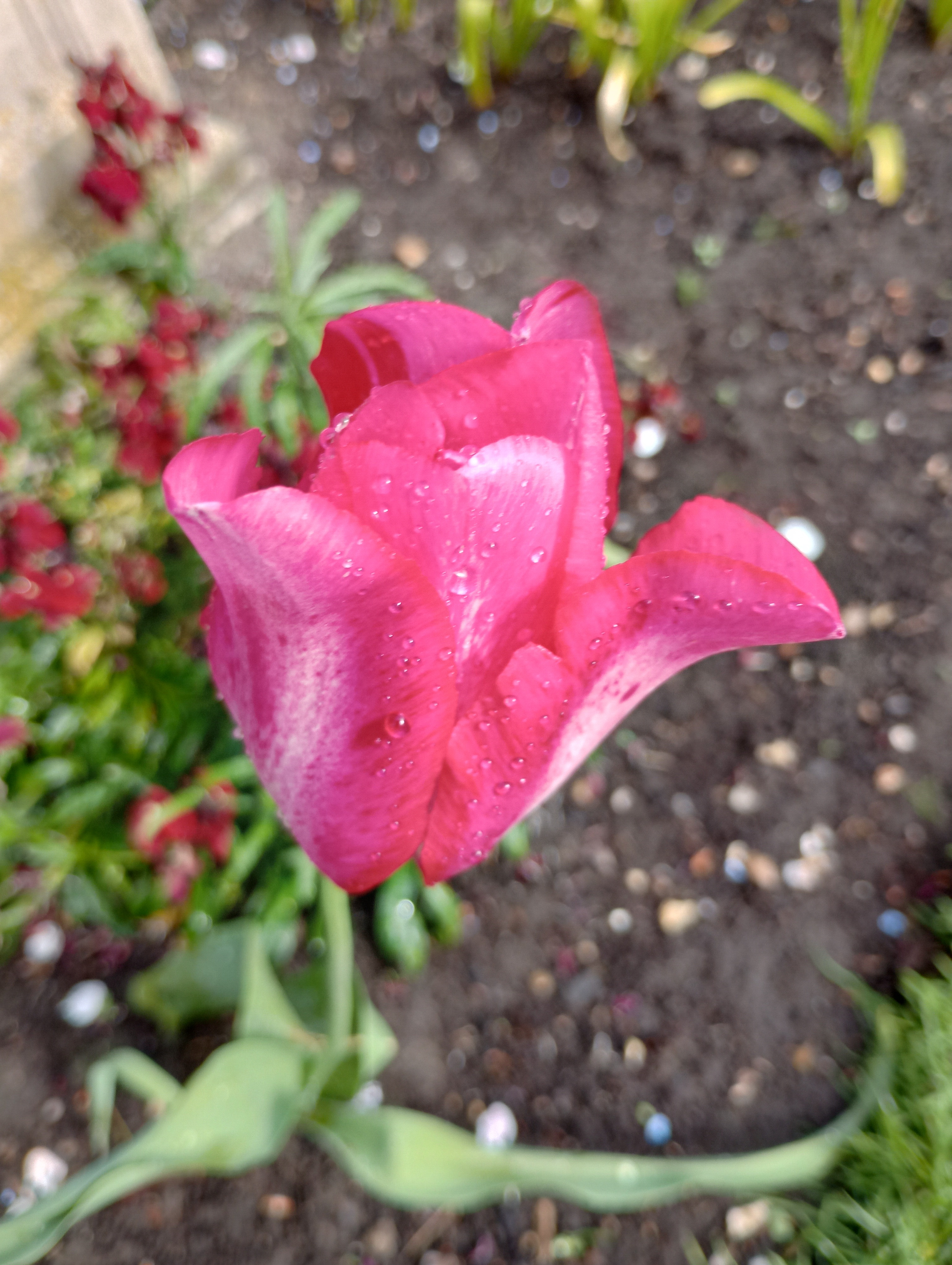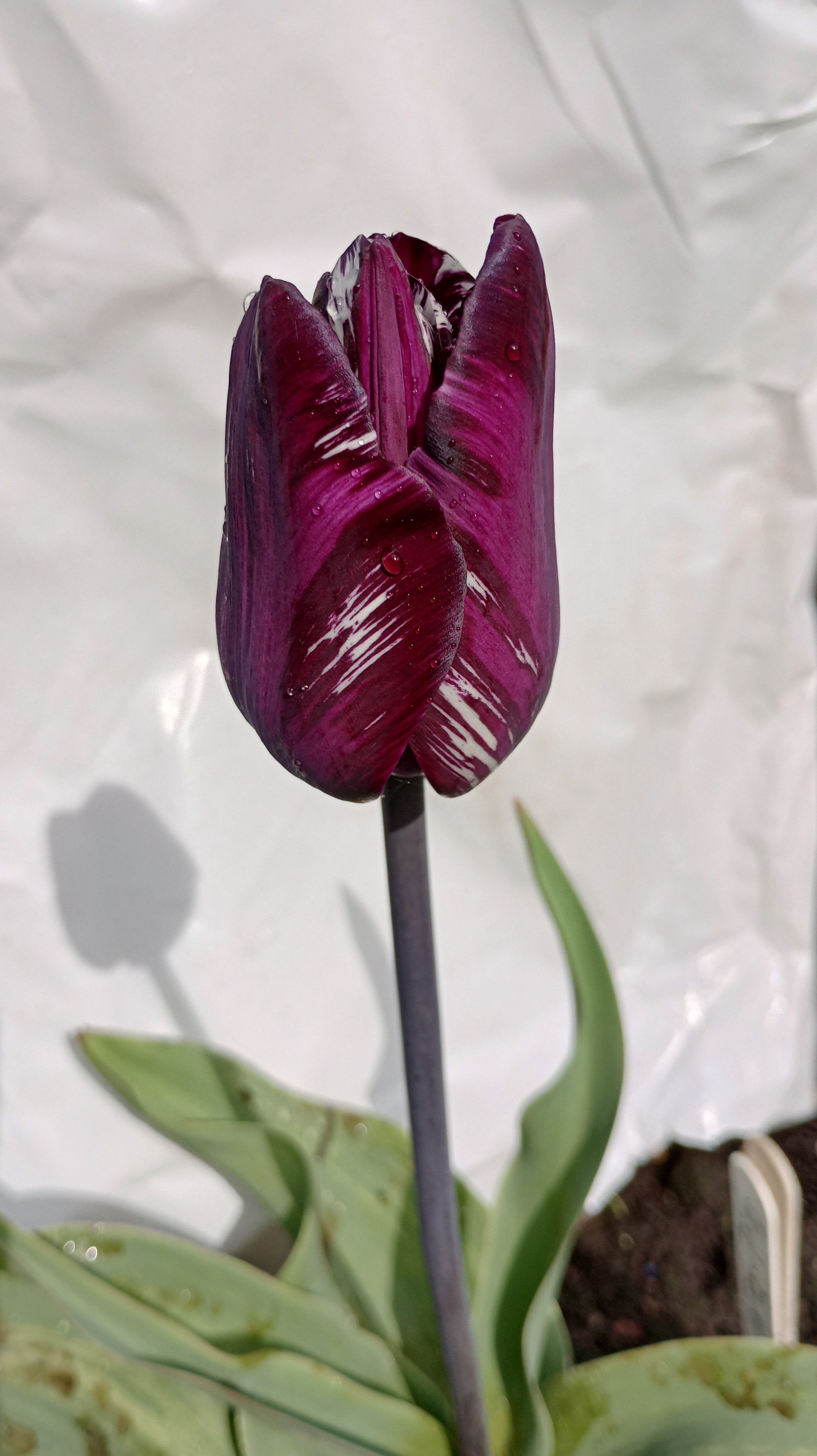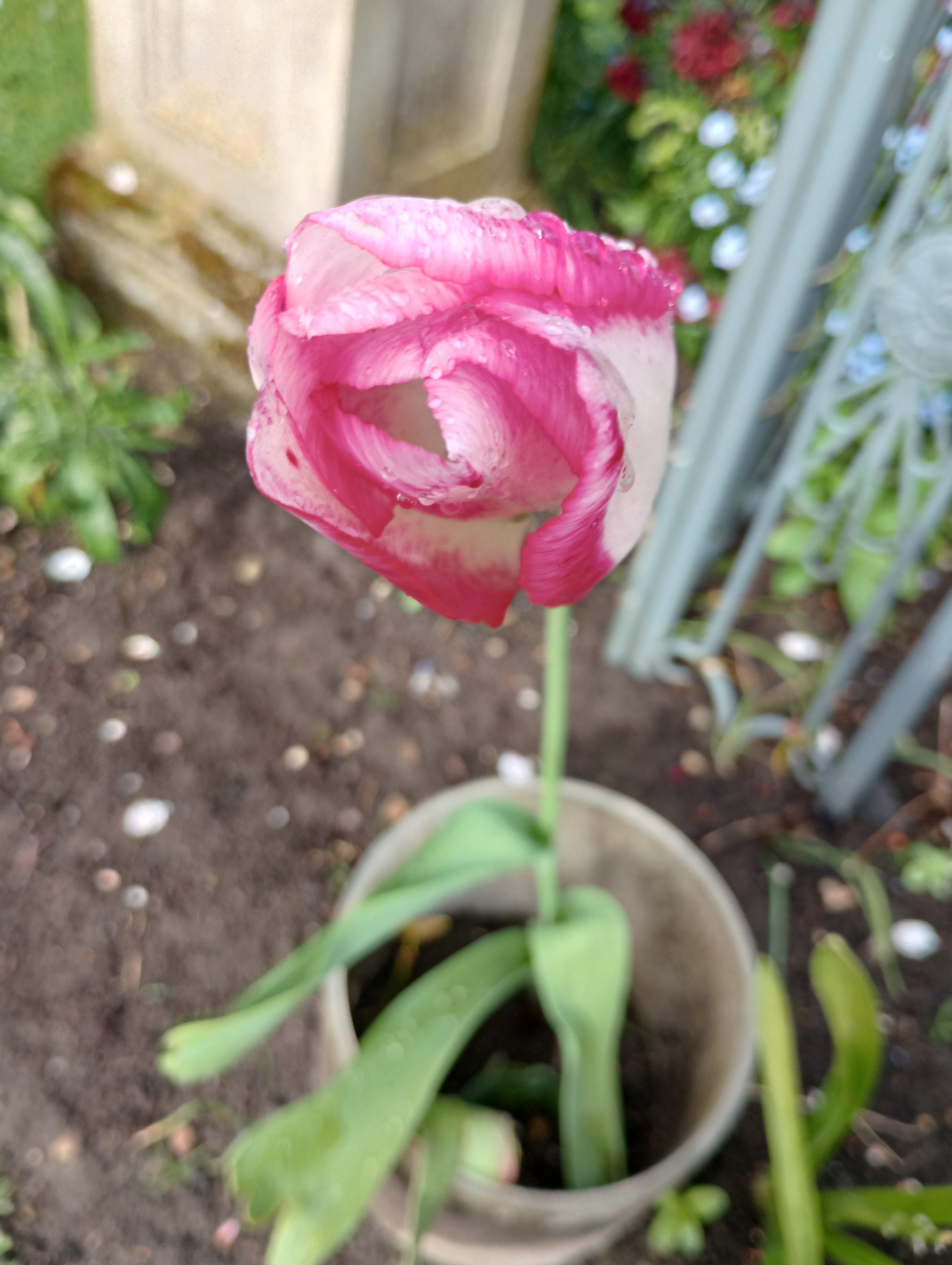
Today, the word florist is misleading. In the 1700's it meant a gentleman who appreciated the work and skill involved in producing flowers which symbolised the triumph of art over nature. It had to be a man of considerable means because the cost of many of the bulbs and plants was far in excess of a month’s wages for most working men. The cult may well have begun with the stylistic drawings in the religious Books of Hours but it found its strength in the Dutch tulipmania. On translation to the British Isles, following the mauling given by Addison in The Spectator, they ceased to be a cult of the gentry and became the occupation of the working man. The main flowers used were the auricula, polyanthus, hyacinth, anemone, ranunculus, tulip, pink, and the carnation. Later pansies, antirrhinums and hollyhocks were bred to florists’ standards. They have never attained the perfection that the eighteenth century florists demanded and today the tulip and auricula are the principal flowers which are exhibited to florists’ standards.
CULTIVATION
The cultivation of these tulips is no different from any other tulip provided that the soil is free draining and alkaline. For many years I have grown them in my vegetable garden to gain the maximum increase of bulbs for the Wakefield Tulip Society. I manure the soil well and plant a crop of potatoes. The potatoes come out in September and a green manure is planted. This is dug in early October. The bulbs are then planted in November when the soil is colder and the slugs do not have so much interest. Some six weeks after flowering (the bulbs are not allowed to seed) I dig them up and plant the Brussels sprouts and cauliflowers. Over the past twenty years I have returned to the Society many thousands of bulbs. They tend to deteriorate if attention is not paid to the tulip fire (Botrytis tulipae), or in my case by using fish meal as a fertilizer during the B.S.E. crisis. The only real problem is tulip fire and this is recognised by distorted leaves and red foliage. It is better controlled by throwing away the bulbs because it quickly spreads and neither copper sulphate nor dithane are as effective as the old benlate used to be.
STANDARDS
A good florist tulip is described as one with a round cup-shaped flower with a good shoulder, and petals level at the top, neither reflexing outwards nor curving inwards at their upper edges. The base of the cup inside must be white or yellow according to the class, and free from any stains; the filaments on which the six bold black anthers stand must be as pure as the ground colour. The petals should be smooth on the end and of good substance, that their colours may appear dense and the flower keep its shape. Breadth of petal is a most valuable property. Otherwise the flower as it expands and grows would show strips of daylight through the base of the cup, a deadly fault known technically as ‘quartering’.
HISTORY
150 years ago almost every town had its own Tulip Society. They would have their exhibitions of flowers, the prize frequently being a copper kettle. Now, however, only the Wakefield and North of England Tulip Society still shows and exhibits their flowers in the traditional standard way — each flower displayed in a beer bottle so that the flower container does not give an advantage to the exhibitor. The Wakefield Society can trace its history back through the records of the Wakefield Florist Society to 1829, although the earliest minute book the Society owns is dated 1907. The Society, to be certain of its provenance, usually claims its foundation to be 1836. Their shows are well documented and the flowers are exhibited to the old florist standard of ‘roses’, which are pink, rose and red on a white ground; ‘bizarres’, which are red and yellow; and ‘bybloemen’, which are purple and black on a white background. These are then further subdivided into feathered, where the colour is on the edge of the petal, and flamed, where the colour runs straight up the centre of the petal. Very occasionally a flower can be both feathered and flamed and to the connoisseur this can be the most arresting sight of all.



VARIETIES
There has been a shortage of varieties to exhibit for the last fifty years. In 1957 declining demand meant that Wallace & Barr offered their remaining stock to the Wakefield Society. It consisted of 9000 breeder (unbroken) bulbs in 14 varieties and 10,500 broken in 12 varieties. £100 seemed a vast fortune then, but this has meant that there is no longer a source where the casual grower can purchase the bulbs. They are now given to members of the Wakefield Society. There has however been an effort among amateur growers to maintain individual cultivars and today almost a hundred cultivars can be obtained. Only this year I have obtained from the Court of Eden in Utrecht the cultivars ‘Cardinal Manning’ and ‘Bacchus’, which were usually exhibited in the last century. There has been a great effort also among the younger exhibitors of the flowers to breed more vigorous strains even though the colours of the cultivars of the last century retain a period charm that the new varieties cannot match. Although it was known that tulips would change colour and create fantastic shading it was not until Dorothy Caley, a student at the John Innes Institute, began a series of experiments in 1927 that there was any proof that this feature which had ruined and made so many fortunes over the centuries was a transmittable virus. For this reason the stock of breeder (those unaffected) tulips of the past centuries declined because growing alongside infected clones means that the virus is transmitted. However since there are cultivars available, even if in small quantities, there is still the opportunity to mount an extensive show of florist tulips by the Wakefield Society. There are probably more of the old bizarre (red on yellow) available than of the other two. Foremost of these are the triumvirate bred by the engine driver Tom Storer (did he never meet Charles Dickens?) 'Sam Barlow', 'Dr. Hardy' and 'Lord Stanley'. They were bred around 1860 in his spare time. 'Lord Frederick Cavendish' (1870) and 'Sir Joseph Paxton' (1845) and 'Royal Sovereign' are good representatives. Sacheverell Sitwell, whose book on Old Fashioned Flowers was instrumental in finding extra growers between the wars, had a particular penchant for the bright scarlet of 'Goldfinder' (late 19th century) while Sir Daniel Hall from the John Innes Institute who set in train the experiments with a virus, bred during the 1920's 'Cyrano' ('Sam Barlow' x 'Sir Joseph Paxton') and the bright crimson 'Gleam'.
The most arresting of the three main classes is probably the bybloemen. The feathered cultivars are particularly attractive, and here 'Habit de Noce', bred in France around 1830 and introduced from Holland about 1830 by Vincent van de Vinne, and its child 'Agbrigg', raised by the great grower Hubert Calvert, are probably supreme. A newer variety called 'Rory McEwen' after the great tulip painter and bred by James Akers now only exists in its broken form but it has produced some excellent blooms. Other varieties with varying success are 'Adonis' (c. 1850), raised by Richard Headley, 'Bessie', and 'Columbine', raised by Sir Daniel Hall. Hubert Calvert, the mainstay of the Society in the bad period after the war, also bred 'Frances Calvert' which he named after his wife, and 'Jane Eyre' named after the daughter of one of the Society's past officials Keith Eyre.
Rose tulips have always been greatly admired since the tulipmania period. They were usually the most highly prized of all.
Probably the oldest variety still grown is 'Sarah Headley', raised by Richard Headley around 1850. I reintroduced this to the Society about 15 years ago and it is still not yet won as frequently at the show as it did in Victorian days. More successful are the two sister seedlings from the same period 'Annie McGregor' and 'Mabel'. 'Mabel' grows with more vigour, but I seem to have the largest stock of 'Annie McGregor' and that is only five bulbs. It is not declining and I trust in three or four years time I will be able to reintroduce this once more.
Other cultivars from the same period are 'Julia Farnese', 'Lady Catherin Gordon' and possibly 'Helen Josephine' whose date is unknown. 'Akers Flamed Rose' is however a most remarkable cultivar. It is easy to grow and breaks well; bred around 1960 by Jim Akers it has a sister seedling in the variety 'Wakefield'. Their vigour is sufficient that there are usually bulbs of these available for those who wish to grow them on joining the Society. This enables them to see the fascination of planting probably one hundred bulbs to get the one flower head that is the illustrated perfection.